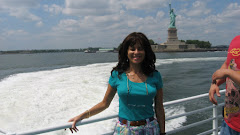Today, November 4, 2012 I took my first visit to the country of Jordan and to the famous archeological site of Petra.
Our ship docked at Aqaba, a booming resort town, known for its gulf’s colorful reefs, is considered one of the best diving destinations worldwide. What’s most interesting is that it is situated at a crossroads between Asia and Africa. In fact, from the upper deck of our ship in the Gulf of Aqaba, you could clearly see Egypt’s Sinai Peninsula and Eliat, Israel. They are so close you feel you can reach out and touch them. I meditated on the peaceful panorama of twinkling evening lights among lands of Arabs, Egyptians, and Jews.
Departing from Aqaba, Jordan’s only seaport (in an otherwise landlocked nation), I took a private tour to the ancient city of Petra, declared a UNESCO world heritage site in 1985. Of note, Petra is considered to be a symbol of Jordan and is its most visited tourist attraction.
Petra Background
Petra is a historical and archaeologicalcity in the Jordaniangovernorate of Ma'an that is famous for its rock-cut architecture and water conduit system. Established possibly as early as 312 BC as the capital city of the Nabataeans, it lies on the slope of Mount Hor in a basin among the mountains which form the eastern flank of Arabah(Wadi Araba).
The site remained unknown to the Western worlduntil 1812, when it was introduced by Swissexplorer Johann Ludwig Burckhardt. It was described as "a rose-red city half as old as time" in a Newdigate Prize-winning poem by John William Burgon. Of note, Petra was chosen by the Smithsonian Magazine as one of the "28 Places to See Before You Die."
Our private tour leader, (Peter Roos, who I met online) arranged for two mini-buses and six taxis to transport us all to the site, located approximately 2 hours away from the port of Aqaba, Jordan. Our first stop was to a local currency exchange office to exchange $71 for 50 Jordan dinars. The entrance fee to Petra is only payable local currency.
Next, our driver, Amnett gave us a brief rest-stop break in a large well-organized, store with a beautiful assortment of local crafts, souvenirs, clothing, perfume, and more. We had been warned that Egypt would spoil us with its bargaining practices. Here, they were only willing to reduce prices by about 10 or 15%. In Egypt, we experienced the opposite, where you could end up paying only 15 or 20% (or less) of the original asking price. I was not tempted to buy anything.
On the drive to Petra, I observed mountains and beautifully colored desert dotted with Bedouin camps, complete with camels, donkeys and tents, and very few fertile patches fueled by irrigated water from the Red Sea.
Amnett contrasted Egyptian versus Arab culture specifying the differences between their way of life, income levels, shopping, practices, etc. It was clear he feels that Arabs look down upon Egyptians as inferior beings. He is proud to be an Arab and not a North African. OUCH!
We arrived in Petra two hours later and formed two tour groups. Before we entered the site of Petra, most of our group elected to take the 10 min. horseback ride up until we reached the entrance of the famous site. Allergic to horses, I chose to walk alongside our guide, Adnan, an enthusiastic and knowledgeable Jordanian. He explained to me that he found French customers to be the most difficult because they're very knowledgeable about history challenge much of what he shares. Americans, in contrast, are the easiest because they don't care about history and all they want to do is take photographs of things they know nothing about. Sadly, we proved to fit the stereotype. (Karla included).
We entered the famous sic, the long, narrow two-mile passageway, surrounded by spectacular 300 feet high rose-colored rock formation, that lead to the ancient city of Petra. Adnan pointed out numerous shrines, temples, cave dwellings, statues, and carvings along the route. We shared this narrow pathway with numerous horse-drawn carriages carrying passengers to and from the city at a rate of $30 per couple. We had to dodge horses, carriages, and donkeys throughout the two-mile walk. It took us approximately 40 min. to walk through.
The buildup for the main site was Adman suggesting we stay to the left and prepare ourselves for the feast that was to come. And there it was – –the spectacular, piece de resistance: the Treasury. This well preserved structure, 140 feet high, 90 feet wide and carved out of solid rock, held treasures of the ancient culture. In front of it were a flurry of crowds of excited tourists snapping their cameras; souvenir- filled shops; beautifully decorated camels for hire; camel owners recruiting passengers; and more. It was awe-inspiring-- simply spectacular.
Next, we continued beyond the Treasury through the vast unpaved ancient city. Yes, we were mostly walking in sand as we marveled at the towering temples, royal tombs, carved Roman theatre, burial chambers, paved streets, large and small houses and public buildings.
We fast-walked for 45 minutes, in the hot sun, non-stop, back through the busy sic to our meeting point. Our leader suggested this. I don’t know HOW I kept up with the group. It’s a wonder I did not pass out.
That was likely the best exercise I had in more than 10 years!!
Because the ship extended our stay in port by 1 1/2 hours, we considered adding a visit to Wadi Rum (where the Indiana Jones films were made). In the end, we opted to head back to the ship, not risking missing our sail away.
It was another great day of learning and exploring!




















.jpg)
.jpg)




No comments:
Post a Comment